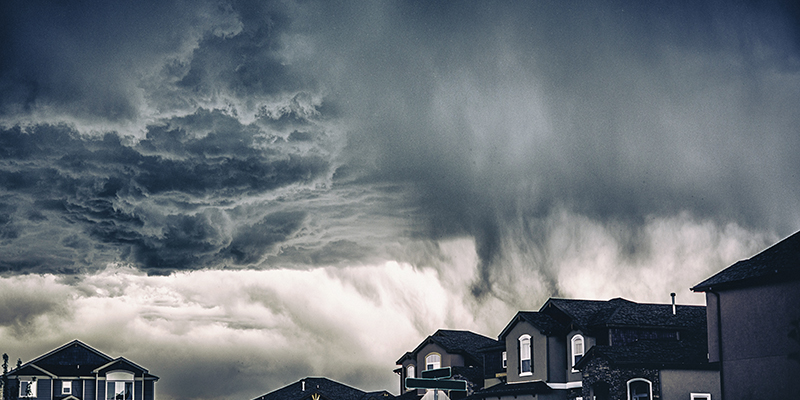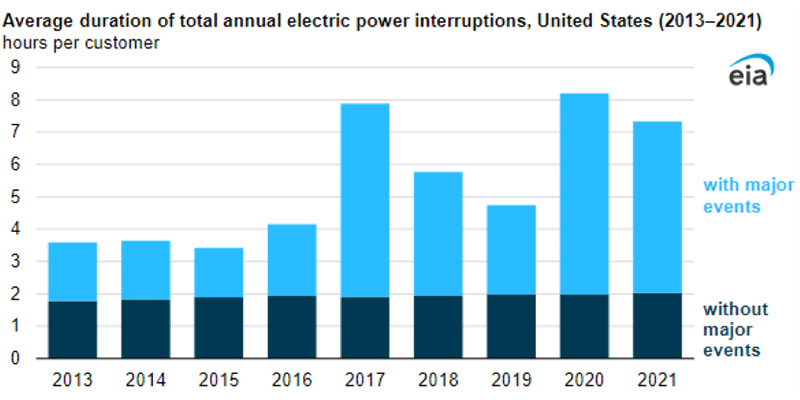Speed Up Storm Restoration With Advanced Lateral Solutions
Back to Top
It’s not your imagination. U.S. storm-related outages are more common due to worsening extreme weather fueled by climate change. Severe storms create widespread damage and test the resilience of the power grid.
The evidence shows a clear trend, according to a Climate Central report:
- Power outages impacting 50,000 customers or more increased by 64% between 2011 and 2021 compared to the previous decade.
- During the same period, there was a 78% increase in the average annual number of weather-related power outages.
- Around 83% of all outages were weather-related in the past 20 years.
As the frequency and intensity of storms grow and the grid becomes more complex, it has made the restoration process harder for utilities—increasing the length of these disruptions for customers on average, U.S. Energy Information Administration data show:

Laterals Contribute to Long Storm Restoration
Laterals are the most susceptible to weather-related outages. These lines are numerous and span for miles. The sheer number of laterals compared to feeders increases the odds an outage will occur on these lines.
They’re also the most exposed. Raging winds, freezing rains, and flying debris can cause numerous faults. This problem is compounded by the fact the grid edge typically contains outdated technology, taking a backseat to lines upstream that tend to be a priority for grid-modernization investments.
Fuses protect most of the grid edge, and they operate whenever they detect fault current, even in temporary situations like a tree branch touching the line. Each blown fuse creates an outage for nearby customers. As a result, these customers are the most vulnerable during storms.
At the same time, as residential sprawl spreads into rural areas, parts of the grid that were once far less impacted by prolonged power outages are now far more populated. Additionally, these people are increasingly vulnerable to the effects of severe weather on power resilience. This makes modernizing the last mile more critical than ever before.
Grid-Edge Customers Wait the Longest To Be Restored
Customers at the end of the line tend to have the worst experience. Utilities prioritize restoration efforts at the substation and then work downstream. The farther customers are from the substation, the longer they must wait for their power to return.
This is a scary and frustrating time. Recently, I had firsthand experience after a violent windstorm knocked the power out. Crews fixed the initial issue, but then an overhead riser fuse blew, creating another outage for half of the subdivision.
Crews returned to replace the fuse, but it blew again. That meant there was a cable fault within the underground residential distribution circuit that serves my neighborhood. Crews hunted for the faulted segment by investigating each transformer. Their frustration grew as they visited the transformer serving my house three separate times.
At this point, it had been a week without power. The food in the fridge had rotted, the house was sweltering, and my phone was dead. Eventually, crews found the underlying problem and restored power. But several of my neighbors were so frustrated they purchased generators to avoid going through this again.
Quicken Storm Restoration With Advanced Lateral Solutions
Modernizing closer to home can avoid unnecessary outages and ultimately speed up overall storm-restoration efforts. Relying on the grid to alleviate issues, crews can focus on intensive repairs and restore customers sooner.
There are several ways to build an autonomous and resilient grid capable of restoring power faster during the next storm.
- Mitigate risk: Underground and loop residential lines to create redundancy. Outages are less frequent on these lines because they are protected from the worst of the storm.
- Reduce impact: Self-healing technology can reroute power on underground residential distribution circuits. When a fault or loss of source occurs, S&C’s EdgeRestore® Underground Distribution Restoration System can automatically restore power to all customers—all in less than 60 seconds.
- Prevent outages: Because 80% of overhead distribution faults occur on laterals and most are temporary, replacing fuses with fault-testing technology avoids unnecessary work for crews. These devices eliminate most issues on overhead lateral lines, significantly improving restoration times. Using multiple devices to segment laterals into smaller areas results in more customers maintaining power during the worst of the storm.
- Stack benefits: With modern technology available for multiple locations throughout the lateral, deploying a suite of solutions achieves end-to-end lateral protection. The size of the rollout directly translates to the speed of the recovery, especially for the most vulnerable households at the edge of the grid.
Prepare Today for Approaching Storms
Transform storm response through proactive planning and investment in advanced lateral solutions. With the grid automatically mitigating and minimizing most outages, it saves unnecessary work for crews. This allows them to restore power to affected customers faster and reduces the number of days or weeks communities spend in the dark. The larger the deployment of these solutions, the more customers benefit during the next black-sky day.